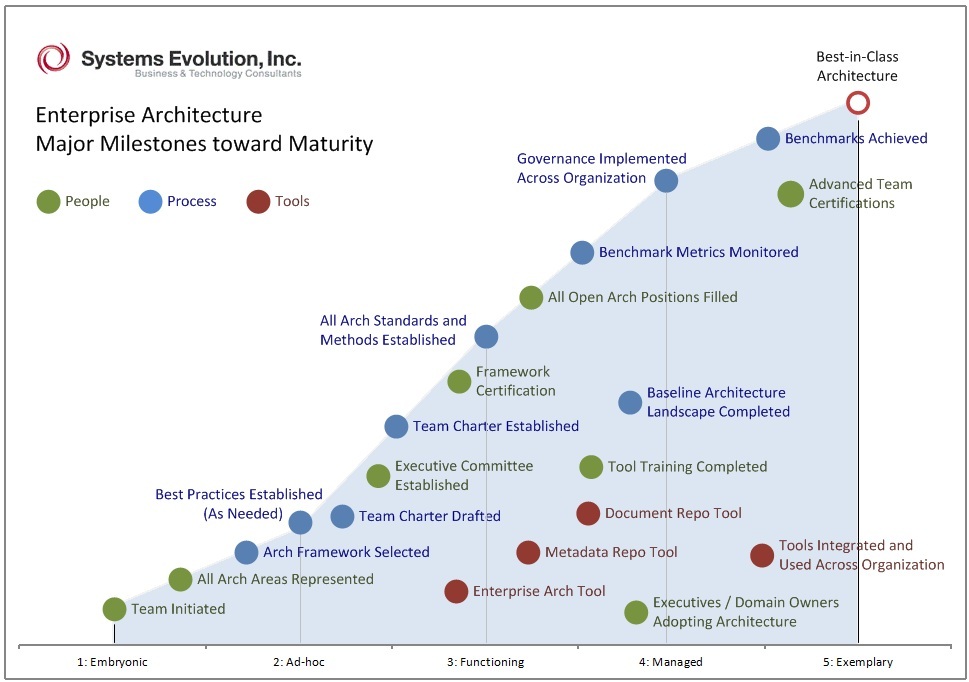For any company of sufficient size and complexity, managing changes to both systems and processes requires a tentacle understanding of the interrelated components and partners involved. Many leaders default to the assumption that major business disruptions or innovations require an army of experts to map and plan for the change, a task frequently handed over to large teams from outside consulting firms. Is this really necessary?
Is Outsourcing the Answer?
There is a saying, often parroted by executives wary of outsiders, that consultants steal your watch and then tell you the time. This adage is reinforced whenever an outside firm is engaged to enact business change but ends up spending weeks – sometimes months – trying to understand and document the enterprise’s current operations and systems. What if the experts you needed were already in-house, and simply needed the tools, techniques, or voice to guide the change themselves?
Increasingly, enterprise architecture (EA) is emerging from within the IT department to influence all aspects of business change. One reason is that technology underpins most if not all of the activities that businesses carry out on a day-to-day basis. Additionally, architecture frameworks, such as TOGAF, have evolved to provide a blueprint for effectively architecting the business itself, including how to navigate the complex organizational landscape to develop new capabilities. Why bring in an outside firm to reinvent the proverbial wheel if you can leverage an EA team to manage that change from the inside-out?
Enterprise Architecture Staffing
Who would you want for your EA team? Obviously, it is important to identify representatives from various areas, including technical, data, and business experts. Think of the people whose cubicles are always buzzing with others coming to ask questions about systems or processes. Often unsung and possessing innocuous titles like “Senior Analyst” or “Subject Matter Expert,” they are the ones who know the history of your business and its systems, because they have been sought out for every major initiative for years. While they may still require some professional development to become effective architects, your question should not be, “Who do I hire to drive EA in my organization?” but rather, “How mature is my existing EA talent, and by extension, how much value is my organization deriving from them?”
SEI was recently engaged to help a client map out a plan to become more mature in their Enterprise Architecture capability. The diagram below shows in broad strokes the course this organization followed to move out of an embryonic state and toward maturity.

While the particular milestones identified above may not apply everywhere, it should be easy to spot where your own organization’s EA maturity sits along the gradient. As you move from left to right, the capabilities, tools, and artifacts used by the EA team build on each other to form a functioning group, measurable outcomes, and a sizeable repository of best practices and templates for future projects. Provided they are managed well, EA teams will yield increasingly valuable insight into your organization as well as solid direction on how to manage changes across all impacted processes, people, and technologies.
A Glimpse Into the Future
Can you envision a future where the knowledge of a few, highly specialized resources are documented, visualized, and made available for many project teams to incorporate into their solutions? What would it look like if the way was already paved for your next business initiative, so that by the time developers were engaged there was a map with “before” and “after” pictures that connected business strategy with a clear implementation plan? And best of all, what if the knowledge to enact business and IT change was trained from within your organization, eliminating the effort and expense of bringing in an army of outsiders? These are the promises realized through successful Enterprise Architecture.



